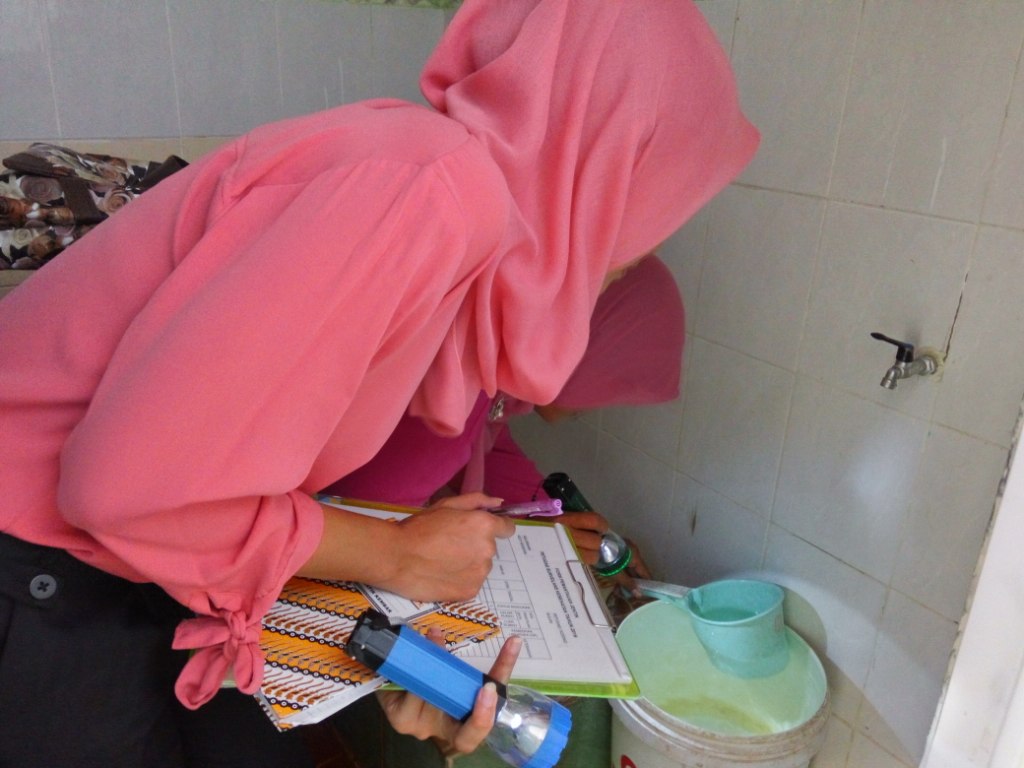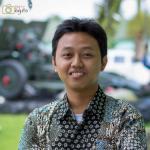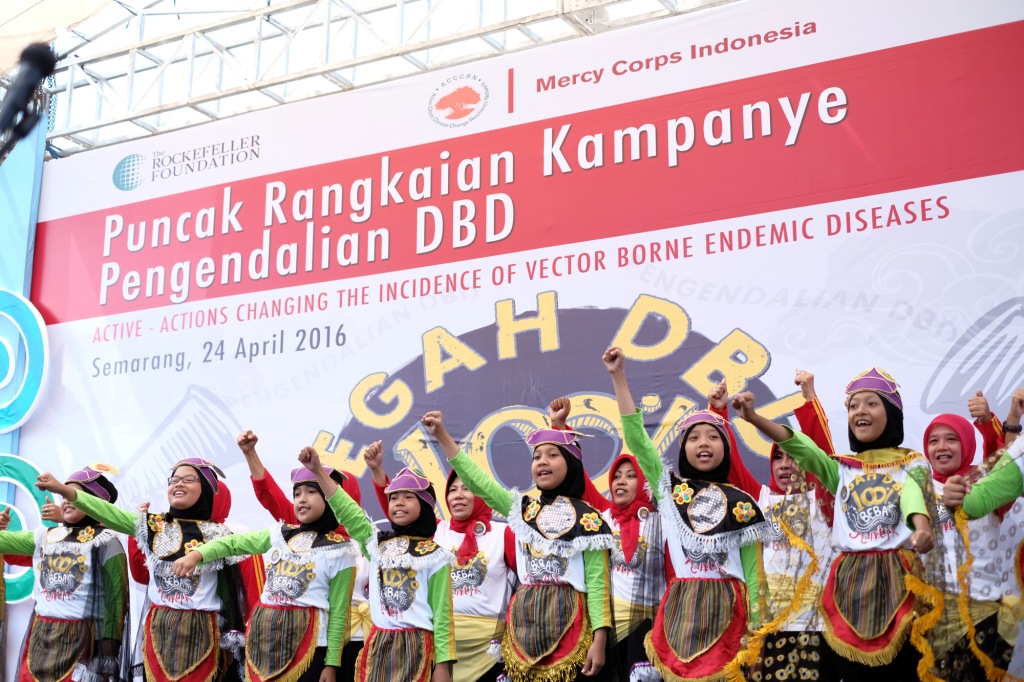ASIA: Indonesia
Being a member of staff at the Semarang Health Agency does not make Dani Miarso resistant to dengue fever. In the past, his son contracted severe Dengue Hemorrhagic Fever (DHF) and he experienced a great loss of time and money taking care of his son in the hospital.
“I was so afraid to lose him. It was a nightmare seeing my son suffering from dengue fever,” said Dani back in time.
“I wouldn’t want to see other parents feeling what we felt at that time. We couldn’t buy his life, but we can prevent this from happening in the future,” Dani continued.
Dani was not alone. Many parents in Semarang felt the same. Based on data from Semarang City Government, dengue fever (DF) affects the youth population disproportionately – 60% of reported cases and 43% of DF-related fatalities in the city occur among youth aged 1 to 14.
Living in a tropical area, and with the climate change-related phenomena, parameters such as rainfall, temperature, rainy days, and absolute humidity have become factors that increase the survival and transmission rate of the mosquito-borne dengue virus. In Semarang, these circumstances are indicated by a high rate of DF incidence.
Semarang had the highest incidence of DF in Central Java Province for five consecutive years after 2008. In 2013, there were 2,364 cases of dengue fever that caused 27 deaths. Although the ranking has decreased since then, in line with the efforts of the City Health Agency of Semarang, the continuing fight against unwanted dengue outbreaks is still sorely needed because the number of cases is still high from year to year.
“We signed a call for action for the city to understand better the additional risks posed by climate change and the future trends of mosquito-borne disease and health systems,” explained Dani.
Therefore, from 2013 till mid-2016, under the ACCCRN Program, Mercy Corps Indonesia has been working in partnership with Semarang City in implementing the ACTIVE Program (which stands for Actions Changing the Incidence of Vector-Borne Endemic Diseases). The purpose of this activity is to strengthen the health system capacity and the resilience of Semarang City in the face of DF which is being worsened by climate change.
Based on the Health Climate Vulnerability Assessment (HCVA) of Semarang City, which may applied to other areas, several climatic parameters such as rainfall, temperature, rainy days, and absolute humidity will have an impact on the breeding places of mosquitoes. Moreover, climatic factors also play a crucial role in the survival and transmission rate of mosquito-borne dengue virus.
Throughout the implementation phase, communities and students in six pilot sub-districts have shown improvement of skills in mosquito larvae monitoring and are actively reporting the larvae free index in time. In addition, to strengthen the information system, a Health Information Early Warning System (HIEWS) that is accessible online is now in place to allow participatory reporting for dengue cases, and it has been tested, used, and shows better quality of reports.
Raising Awareness to Fight Dengue

Source: ACCCRN Indonesia
The community is carrying out mosquito larvae monitoring in neighborhood houses on a voluntary basis.
On 24 April 2016, the City Health Agency of Semarang with Mercy Corps Indonesia held a campaign to raise the awareness of Semarang citizens regarding dengue fever and how it relates to climate change. Using the slogan “Fight Dengue, 100% Free from Mosquito Larvae!”, and taking place at Semarang City Hall, the campaign was attended by over than 400 people and received attention from many local stakeholders. The Mayor of Semarang, Hendrar Prihadi, gave his support by officially opening the event and gave a speech in which he encouraged his citizens.
“Dengue fever is a serious problem for Semarang and everyone should be involved in preventing this unwanted situation, from the government to the community level,” said Hendrar on his speech.
The public campaign consists of a dengue-campaign fun walk, storytelling for children about the feats of Superhero against Aedes Mosquito, and some fun competitions that motivate communities to participate more in dengue virus prevention: free larvae surveillance, participative information media and a slogan chanting competition.
In addition to these, a talk show session was held with Dr. Widoyono (Head of Semarang City Health Agency), Drs. Bunyamin, MPd (Head of Education Agency), and Gatot (representative from the City Family Welfare Group). During the discussion, everybody agreed that participation from everyone is important in preventing dengue cases. “We have to participate actively and play our roles in preventing the unwanted dengue fever cases. We cannot rely on just one stakeholder group,” said Dr. Widoyono. It is also important to consider the role of women who have the ability to control risk at the household level considering that she can advise the family to maintain the cleanliness of the house and other things that contribute in dengue fever prevention. Children’s role in school also needs to be considered since they are very vulnerable to the threat of dengue fever. Therefore, it is very necessary to raise their awareness of the dengue virus, including how to prevent it and how climate change contributes to the life cycle of Aedes Aegypty mosquito.
Following the campaign event, a seminar talk show was held on 28 April 2016 and broadcast live on local radio. It was intended to share the lessons learned from the ACTIVE Program, especially how the program emphasizes community development and utilizing technology, as well as the success of the pilot schemes held in six Semarang sub-districts in terms of the development of larvae monitoring skills and active larvae free index reporting.
This participatory approach may become a trend in many community projects in this era. However, the engagement process to gain support from the local leaders, the interactive fun-learning method used in the trainings, and intensive assistance to motivate stakeholders’ motivation, are several learning points from this ACTIVE program. It has to be acknowledged that behavioral change is neither an easy nor short process, but the efforts to encourage better participation by people in preventing dengue fever needs to be persistent.
“More people in our community now have committed to being involved in keeping their neighborhood clean and healthy as part of dengue virus prevention. They have this sense of ownership because they have been intensively involved in trainings and they feel that now they have more responsibilities and roles in the community.” said Yunita from the the Public Health Center of Sekaran Sub-district, Semarang City.

Source: ACCCRN Indonesia
The student doctors in school are observing their school environment to check several places that have the potential to contain larvae as part of dengue virus prevention.
Dengue Fever Online System Report
To support the field implementation, the Health Information Early Warning System (HIEWS), an online application to allow participatory reporting for dengue cases, is now in place. The HIEWS has been tested, used, and shows better quality of reports.
Local participants from communities and hospitals can report cases and receive warnings that inform people about potential and existing dengue cases in a timely fashion, so that they can be quickly responded to. Up to April 2016, the system has recorded over than 10,000 pieces of dengue-related data since the system set up since September 2015. Of these, 7,555 are mosquito larvae monitoring reports from communities with an average of 175 people from six sub-districts reporting every month. All of these measures have shown results according to the larvae free index within the six sub-districts, which has been increased by around 26.3% from 69.1% to 95.4% within 7 months, and all of these six areas are reported to be more resilient to dengue cases since the intensive capacity building began.
Although the intervention has only been tested in these six pilot areas, it is hoped that the lessons learned and success stories can be transferred to and inspire many other areas facing similar challenges. The existence of climate change phenomena and its impacts on the health sector, as well as the high rate of DF incidence in tropical areas, indicate that DF treatment needs to be complemented by a complete understanding of future trends for vector-borne diseases and health systems in relation to climate change.
0 comment(s)








